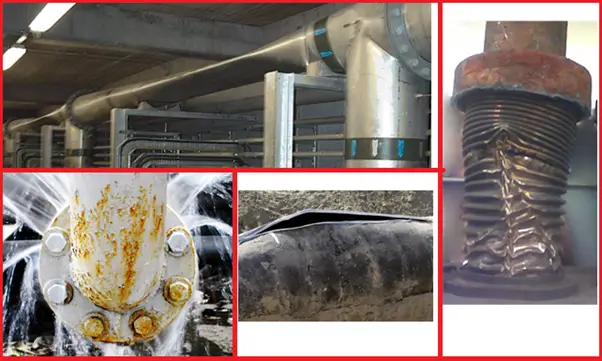A Piping Snubber is a Dynamic Restraint that protects the piping system against impulse loading conditions from Seismic or Surge Events. It is basically a mechanical device that allows pipe operating displacement but restricts the sudden movement of dynamic events.
Refer to my earlier article on Dynamic Restraint that explains details about Snubbers, their working, types of snubbers, etc. In this article, I will explain the step-by-step procedure of Snubber Modeling in the software Caesar II.
Snubber Modeling in Caesar II
“Static” snubbers have a support restraint called SNB following a translational direction in the restraint type field. When a snubber is entered, the restraint fields in Ceasar II change as follows: Gap and Mu are disabled.
Snubbers are the translational restraints that provide resistance to displacement in static analysis of occasional loads only. It is assumed that occasional loading is dynamic in nature, similar to static seismic or static wind loading.
THESE SNUBBERS ARE INACTIVE FOR ALL EXPANSION SUSTAINED, AND OPERATING STATIC CASES, AND ARE ACTIVE FOR ALL TYPES OF TRUE DYNAMIC ANALYSES, i.e. HARMONIC, MODAL, OR SPECTRAL.
These restraints will be active in all static load cases defined as occasional in the load case list. Static snubbers may be directional, i.e. may be preceded by a minus or plus sign.
Steps for Snubber Modeling
The steps for modeling Snubber are mentioned below:
- Create a node where snubber is required to add. (Node 10)
- Run the operating cases without defining a snubber at that node.
- Note the displacement in all six degrees of freedom at the location (Node 10) where to add the snubbers (Assume D1 is the displacement at that node at T1 temp and D2 at T2 temp).
- From input, the piping spreadsheet clicks on the restraint checkbox and defines XSNB/ZSNB, etc as per requirement at node 10 with a distinct C-Node 11. It will appear as a guide in Caesar Sketch.
- Place displacements on the CNode (CNode 11) by activating the displacement checkbox.
- Modify the load cases by including D1 everywhere T1 displays and D2 where T2 appears for Operating load cases.
- For defining occasional stresses create the following load cases as given in Fig. 1.
- Run the analysis to obtain results.
Application of Snubber
Snubbers are normally used for reducing the damaging effects of earthquakes, turbine trips, relief valve discharges, and surge events.
Few more Resources for You…
Brief Description of Sway Brace, Strut and Snubber (Dynamic Restraints)
Modeling of Sway Braces in Caesar II
Modeling of Rigid Strut in Caesar II
Snubber Modeling in Caesar II
Piping Stress Analysis Basics
Piping Design and Layout basics
Piping Materials Basics
Few Jobs for You.
Video Explaining Snubber Installation
The following video by LISEGA explains the Snubber Installation Tips in detail










Sir Thank you for sharing information.
Can be used snubber for wind cases? I have a tough piping system where it can not be placed rigid support to retain the wind loads because it is not in favor with the thermal displacements. By following your procedure for earthquake and wind cases the result are awesome. For earthquake I have no doubt but for wind? Is it correct?
Dear Kostas,
In my opinion the snubbers are mechanical devices which activates by sudden displacement and not by gradual movement. Earthquake displacements are sudden and not gradual like thermal displacement. The wind is gradual loading and not sudden. So snubbers will not get chance to activate and the loading due to wind will be effectively applied on your system.
I will differ with Harshal with one expect. Yes wind is gradual but that is normal wind, we do our analysis for max wind which includes gusts. The Snubber will be active if there a wind gust and hence active for your worst wind load.
You may want to run the system with normal wind loads to make sure it will still be ok for the normal wind loads.
Hie,
What value to be inserted in snubber Stiffness. How to calculate this snubber stiffness value.
Can you please include this topic on your Post.
Dear Mr. Anup Kumar Dey,
Can you please activate this topic: What value should be inserted in snubber Stiffness? How to calculate this snubber stiffness value? Thank you.